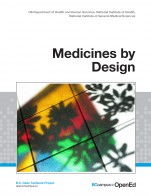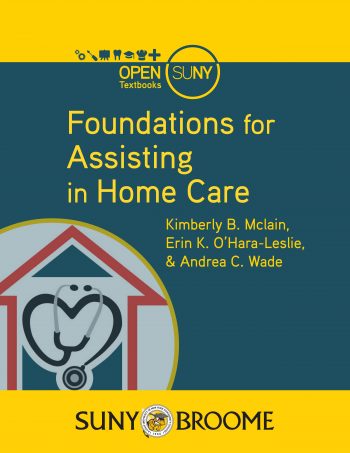
 Health Education by Garrett Rieck (2020): College Of the Canyons
Health Education by Garrett Rieck (2020): College Of the Canyons
Readers will learn about the nature of health, health education, health promotion and related concepts. This will help to understand the social, psychological and physical components of health.
 Introduction to Health by Kelly Falcone (2020): Palomar College/LibreTexts.
Introduction to Health by Kelly Falcone (2020): Palomar College/LibreTexts.
This compilation has been developed by Kelly Falcone, Professor of Kinesiology and Health at Palomar College and adapted from SUNY OER book Disease Prevention and Healthy Lifestyle by Trina DiGregorio, M.S., Adjunct Professor at Monroe Community College. Professor DiGregorio created the framework for this online textbook by adapting Contemporary Health Issues by Judy Baker, Ph.D., Dean of Foothill Global Access at Foothill College.
 An Introduction to Nutrition v.1.0 by Various Authors (2012): OER Commons
An Introduction to Nutrition v.1.0 by Various Authors (2012): OER Commons
Textbook written by Community College and University faculty for non-majors in Nutrition using science and evidence based nutritional science information. This version was accessible in 2012. Material covers basic definitions, and nutrition related to healthy diet and the human body. Separate chapters on carbohydrates, lipids, proteins, nutrients for fluid and electrolyte balance, antioxidants, bone health, metabolism, body weight and the life cycle. Special features to aid in instruction for each chapter include: The “Learning Objectives”, “Big Idea” related to chapter themes, “Key Takeaways” and a “You decide” challenge to think about how topics relate to student’s life. “Discussion Starters”, “Videos” and “Exercises” are provided as well as links to choosemyplate.gov and other sources.
 Disease Prevention and Healthy Lifestyles by Trina DiGregorio (2012): Monroe Community College
Disease Prevention and Healthy Lifestyles by Trina DiGregorio (2012): Monroe Community College
Wellness is being in good physical and mental health. Because mental health and physical health are linked, problems in one area can impact the other. At the same time, improving your physical health can also benefit your mental health, and vice versa. It is important to make healthy choices for both your physical and mental well-being.
 Medicines by Design by US Department of Health and Human Services (2019): National Institute of Health
Medicines by Design by US Department of Health and Human Services (2019): National Institute of Health
Medicines By Design aims to explain how scientists unravel the many different ways medicines work in the body and how this information guides the hunt for drugs of the future. Pharmacology is a broad discipline encompassing every aspect of the study of drugs, including their discovery and development and the testing of their action in the body. Much of the most promising pharmacological research going on at universities across the country is sponsored by the National Institute of General Medical Sciences (NIGMS), a component of the National Institutes of Health (NIH), U.S. Department of Health and Human Services. Working at the crossroads of chemistry, genetics, cell biology, physiology, and engineering, pharmacologists are fighting disease in the laboratory and at the bedside.
 Contemporary Health Issues by Nancy Guthrie (2018): Pierce College
Contemporary Health Issues by Nancy Guthrie (2018): Pierce College
Health education can promote satisfying, good personal health. It enables people to make decisions about everyday health-related activities at all stages of life. In 1977, Dr. Bill Hettler, Co-Founder and President of the Board of Directors of the National Well Institute, developed a Six Dimensional Wellness model which consisted of: physical, emotional, social, spiritual, intellectual, and environmental. The balance of the six dimensions are factors that contribute to good health. In order to be considered a “well,” individual, it is important to assure that these areas are all balanced.
 Foundations for Assisting in Home Care by Kimberly B. McLain et al: SUNY
Foundations for Assisting in Home Care by Kimberly B. McLain et al: SUNY
Home health services are those which are provided within the comforts of the home setting to help people avoid hospitalization or skilled nursing facility placement while they recover from illness, injury, or disability. Home health care may also be provided to people who suffer from chronic illnesses, those who have cognitive or physical disabilities or those who have been diagnosed with a terminal illness. Home Health Aide and Personal Care Aide are two of the fastest growing occupations. This text will provide you with the background necessary to begin working toward a career in the home care field.
 Concepts of Fitness and Wellness by Scott Flynn et al (2018): University Systems of Georgia.
Concepts of Fitness and Wellness by Scott Flynn et al (2018): University Systems of Georgia.
This open textbook for Concepts of Fitness and Wellness at Georgia Highlands College covers: Healthy Behaviors, Fitness Principles, Cardiorespiratory Fitness, Muscular Fitness, Flexibility, Body Composition, Nutrition, Weight Management, Stress, Cardiovascular Disease, Cancer, Substance Use and Abuse & Sexually Transmitted Infections.
Lifetime Fitness and Wellness (Lumen)
This course is designed for students of all fitness levels, and provides an introduction to the study of fitness and wellness, as well as their relationship to a healthy lifestyle. Students assess their own lifestyle and are motivated to incorporate physical fitness and wellness principles into daily living. This course was developed by faculty at the Extended Learning Institute of Northern Virginia Community College.
Contemporary Health Issues (Lumen)
Health education can promote satisfying, good personal health. It enables people to make decisions about everyday health-related activities at all stages of life. In 1977, Dr. Bill Hettler, Co-Founder and President of the Board of Directors of the National Well Institute, developed a Six Dimensional Wellness model which consisted of: physical, emotional, social, spiritual, intellectual, and environmental. The balance of the six dimensions are factors that contribute to good health. In order to be considered a “well,” individual, it is important to assure that these areas are all balanced. Health is a very broad concept. When broadly defined, health is a state of complete physical, mental, and social well being not merely the absence of disease.
Nutrition 101 (Kansas State University)
Course Objectives: Explain how food choices affect health and fitness. Design a healthful diet. Discuss the roles of physiological, cultural, and environmental factors on hunger and satiation. Describe digestion and absorption of nutrients. Explain how carbohydrates, proteins, and lipids are used in the body. Describe the role of the vitamins, minerals and phytonutrients in the human body. Explain metabolism of macronutrients and alcohol. Describe the role of diet and exercise in health and disease. Explain how food production and handling affects food safety. Discuss the environmental impacts of food production and consumption. Describe the nutrients involved in fluid and electrolyte balance. Explain how special populations may require specific nutrients in their diets.
Health Bookshelf (LibreTexts)
Health & Fitness (OER Commons)
Nutrition (OER Commons)
Occupational Health and Safety (OER Commons)
Personal Health (Portland Community College)
Sexual, Reproductive Health & Rights (OER Commons)
Walking and Jogging for Fitness (Galileo, USG)